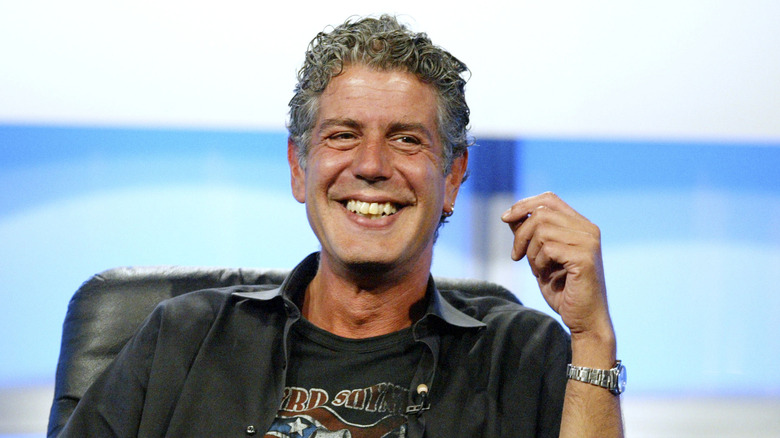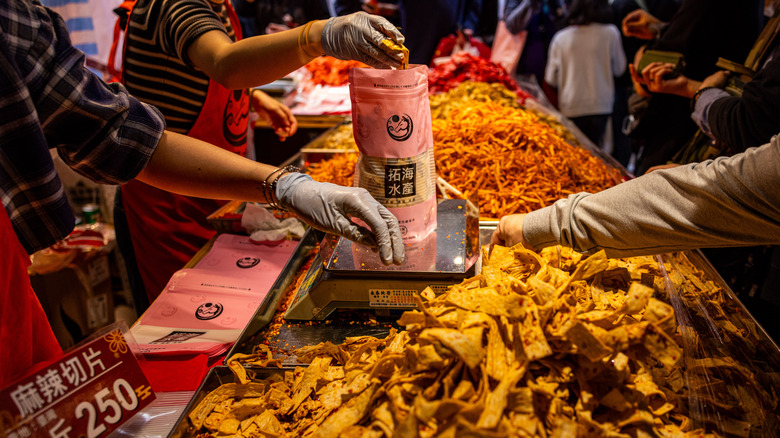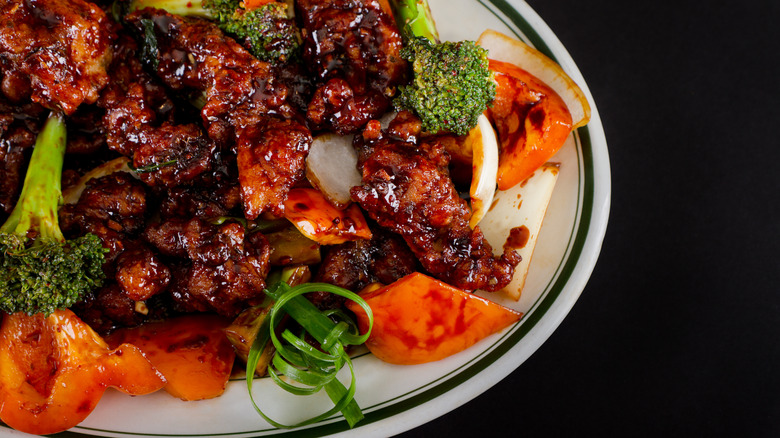The Cuisine Anthony Bourdain Thought Was Underappreciated In The US
Anthony Bourdain, the beloved chef, writer, and foodie, was known for his hot takes. The kitchen tastemaker had strict opinions on which foods were good, and which foods he hated with a passion – high culinary crimes, if you will. He was also not a fan of tourist traps and chains, and therefore had tricks for finding the best restaurants in any city he visited. He appreciated authentic food, made well, as he wanted to eat dishes that came from tradition and taste.
So, several years ago when Redditors asked Bourdain which cuisines he thought were underappreciated in the U.S., he had a ready answer: Chinese food, among many others. "There are a lot that I think are underappreciated," Bourdain said. "Chinese food still remains a mystery to us, it's not really anything like what they eat in China."
But of course, he had many more to add: "Our knowledge on Japanese is not so wonderful. Countries whose food is underrepresented, Brazil, Peru, higher-end Mexican food, Burmese, West African. Food from Senegal and Ghana is amazing, delicious, complex, and interesting."
Bourdain had a deep love of Chinese cuisine
Bourdain traveled widely, so he knew more than most about global cuisines. Bourdain visited China nine times in total for his various television shows, touring Beijing, Chengdu, Dali City, Harbin, Huanglongxi and Leshan in the Sichuan province, Hong Kong, Lijiang, Macau, Shanghai, and more.
Bourdain especially loved visiting the Sichuan region and enjoying its blisteringly spicy food. In one episode of "Parts Unknown" Bourdain delighted in testing the spice limits of his friend, Chef Eric Ripert. In Shanghai, Bourdain visited the Shouning Road night food market, where he praised stuffed oysters grilled over charcoal, snake fried in woks, and "the good, old stuff" that made up the no-frills street food he loved so much.
For his show "No Reservations," Bourdain especially wanted to pick travel destinations that were off the beaten path, traveling to countries and cities that didn't get enough attention in the Western world for their cuisines.
The uniqueness of Chinese-American cuisine
When Bourdain said that the Chinese food we know is "not really anything like what they eat in China," he had a point. Chinese fare has a long and storied history in America, and Chinese-American food has become its own delicious cuisine, with unique dishes and flavors.
When a wave of Chinese immigrants came to the U.S. in the late 1800s, they brought along many traditional recipes, opened up new restaurants, and began innovating with new ingredients and combinations. They created dishes like beef with broccoli, and General Tso's, which remain hallmarks of Chinese-American food today. San Francisco's Chinatown, specifically, was a prolific incubator of new recipes and flavors. Chop suey, egg foo yung, moo goo gai pan, and shrimp in lobster sauce were all created there, and are uniquely Chinese-American dishes.
Whether you're going to tuck into a more American General Tso's cauliflower recipe, or Sichuan-level spicy noodles, both cuisines have delicious dishes to offer, and Bourdain would be proud to see them being enjoyed more in the U.S.



